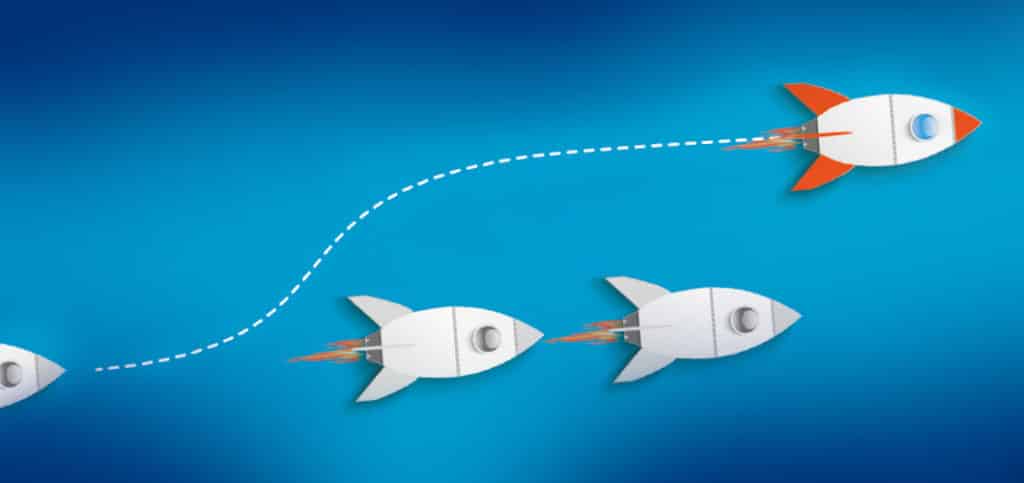What is Adaptive Leadership: Definition & Heifetz Principles

Adaptive leadership is a leadership model that embraces change, challenging the status quo in favor of experimentation and innovation. The goal is for companies to be adaptive in their decision-making so that, despite an evolving environment, challenges are handled successfully.
Dr. Ronald Heifetz and Marty Linsky introduced the adaptive leadership model at Harvard University. Like many other business leaders, they realized that the single-figure, top-down leadership model is outdated and impractical. No single person can solve all of a company’s problems, which brings in the need for adaptive leadership.
Equipping a team of leaders to work together with employees is essential for a business’s survival. The adaptive leadership model goes against traditional problem-solving methods. In this model, there are two types of problems: technical and adaptive. Technical issues rely on protocol, procedures, rules and regulations to solve them. Adaptive challenges, on the other hand, depend on dynamic, people-focused solutions. What’s more: creative solutions strengthen the organization and ensure its long-term success.
This leadership theory was particularly helpful during the COVID-19 pandemic, which saw many businesses needing to come up with new initiatives to solve unprecedented world challenges. Many businesses continue to employ this style of leadership today from a developed awareness of the need for adaptability in order to survive.
Ronald Heifetz 5 Adaptive Leadership Principles
AT WDBH we use these five principles as a foundation for our Adaptive Leader Experience. Let’s explore what constitutes an adaptive leadership style:
Emotional Intelligence
Emotional intelligence is the ability to perceive other’s feelings as well as your own. Adaptive leaders can control their own emotions and handle relationships empathetically. Empathy allows leaders to respond to adaptive challenges because they see the ‘people’ behind the issue.
Organizational Justice
People in positions of leadership need to be honest and open. Organizational justice refers to how employees perceive fairness in the workplace. If adaptive leaders present all the facts, changes are more readily accepted and understood by stakeholders and employees.
Development
A key component in adaptive leadership is to embrace learning and continuous growth. Leaders shouldn’t be afraid to try new tactics to solve problems. They should also encourage innovation and creativity from their employees, even if the solutions don’t always work.
Character
Adaptive leaders should be willing to switch course when something isn’t working. Being open to feedback is essential to the adaptive leadership framework. Adaptive leaders also embrace diversity and accept everyone’s unique perspective on how to solve challenges.
Win-Win Problem Solving
Instead of the classic divide and conquer approach, think about how both sides can benefit. External stakeholders and members of the organization will gain more by working together. For example, an organization might benefit more from a merger with a competitor than continuing to expend resources while trying to beat the competition.

Photo by Josh Calabrese on Unsplash
Real Life Examples of Adaptive Leadership
It’s easy to talk in principles: how about applying this to a real life business context? The following are proactive approaches to adaptive leadership across several different industries:
- Podcast creators networking with one another. People in the same niche tend to promote each other’s shows. The audience usually listens to more than one show in that niche, and they all end up with more listeners. Though promoting your competitors’ work goes against traditional methods, it turns out to be mutually beneficial.
- Organizational change at the Chobe Game Lodge in Botswana. Initially, safari managers needed to reduce the cost of maintaining guide vehicles. When they discovered male guides used more gas than females, they transitioned to an all-female team. This went against cultural beliefs of male guide superiority but proved to be an effective economical solution.
- A successful organization facing disruptive technology. Let’s say a taxi company has been the top private transport business in a city for decades. Suddenly, a ride-sharing company like Uber comes along and poses a significant threat. The taxi company has to lower prices or create a competitive differentiator to overcome this challenge. They can’t keep functioning as they have in the past, or the business will fail.
Challenges to Adaptive Leadership
It’s worth exploring the challenges that can arise with adaptive leadership in practice, as well as the benefits. Implementing a new leadership style across an entire business won’t come without its speed bumps along the way.
There is always a level of risk and disruption involved by embracing adaptability. Under this leadership style, rules and existing processes are meant to be bent or broken. It means persuading individuals at companies to embrace a change in attitudes and empowering them to take proactive steps to come up with creative solutions as a team. It involves leaders being vulnerable to feedback and dealing with multiple ideas and opinions. All of this can rock the existing status quo of companies which aren’t used to experimentation.
Despite the effort required to execute adaptive leadership, the rewards seen across the operations and financials of a business, as well as employees’ well-being, makes it a worthwhile model to strive towards.
Develop your adaptive leadership style with WDHB
On our Adaptive Leader Experience, one of our many Leadership solutions, we explore the concepts and principles of adaptive leadership through the lens of NASA and the Apollo Moon Mission. Compelling case studies of the key leaders and leadership lessons from the beginning of the human space journey, as well as application of how those lessons impact modern-day commercialization of space technology and transportation, illustrate the power of agility when managing change.
During this virtual live program, attendees use virtual settings and activities to create an immersive, interactive journey through elements of virtual reality, live group discussions, interviews with leaders in the field of aerospace exploration and technology, and more. After attending the Adaptive Leader Experience, attendees are well-equipped to apply the actionable leadership lessons, tools and frameworks to their own rapidly changing environment.

Lead With Courage
Learn from NASA’s pioneering leaders to overcome obstacles, foster innovation and empower your team toward ambitious goals.
Adaptive Leadership: The Process of Change
Adaptive leadership requires embracing change and encouraging it across the company. Although it can be challenging, going against the status quo will reap results in the long term. Heifetz essentially set out that adaptive challenges require adaptive leadership: consistently valuing change and adaptability allows leaders to rise to these challenges. Adaptive leaders welcome difference, are willing to self-correct, display emotional intelligence with their employees and are open-minded.
In an organization with adaptive leadership characteristics, every person’s opinions are valued. Each team member is seen to have the ability to solve an unknown problem. When external factors such as a crisis disrupt an organization, adaptive leadership is needed to find creative solutions.
Adaptive Leadership FAQs
Why is adaptive leadership important?
Heifetz adaptive leadership is essential for an organization to solve problems in a fast-paced world. Disruptive technologies, new trends and fierce competitors are emerging every day. Companies that have the framework to solve these challenges creatively will be able to scale and grow. On the other hand, companies that stick to the “command and control” approach will struggle to succeed.
What is an adaptive challenge?
Adaptive challenges differ from clear-cut technical challenges. Procedures, rules or regulations can’t solve them. Instead, they are usually systemic issues that require a shift in values or beliefs. Thus, the problem has to be analyzed by adaptive leaders to find the appropriate response. Working together is the key to solving an adaptive challenge, similar to the solution we provide with Experience to Lead’s Apollo Leadership Experience.
What are adaptive leadership skills?
Adaptive skills include the ability to anticipate future challenges, share those challenges with the team and develop collective solutions. These skills rest on the understanding that solutions are non-traditional and innovative. Openness to feedback and constructive criticism is also an essential adaptive skill.
How does the adaptive leadership approach differ?
The adaptive leadership approach doesn’t rely on one individual alone to solve problems. Instead, this model enables a group of people to find practical solutions. It embraces critical thinking among all members of an organization and teaches them to adapt. Instead of sticking to the old methods that worked in the past, it encourages innovation.
Author
Subscribe to get Access to Exclusive Content





